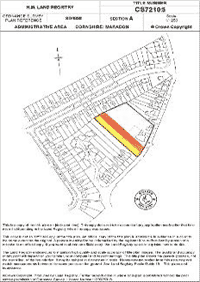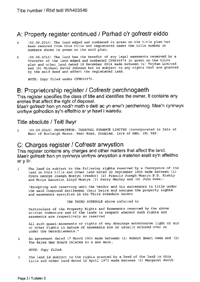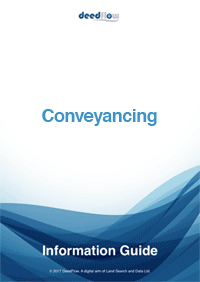Land Registry Searches
Property Title Register
The Title Register of a property provides all the details relating to ownership of a property, the way in which it is owned, and precisely what is owned, setting out the covenants, easements and restrictions affecting the property and its ownership. It is the official evidence of proof of ownership and is used by conveyancers to prepare the contract and transfer deed when transferring land from one owner to another.
It is also extensively used by non-professionals to check the ownership details of a property, its purchase price, and the terms upon which it is owned, and providing a wealth of additional property related information.
SelectProperty Title Plan
The Title plan illustrates the extent of the property owned, outlining it in red. Where parts of the property are affected by rights of Way or restrictive covenants, coloured markings are used to indicate them. Areas of land removed from ownership are outlined in green. This document is the other official document proving ownership and is used by property professionals and non-professionals alike.
SelectPrior Copies of Title Documents
The Title Register shows subsisting data only. This means that previous ownerships and mortgages are not shown on the current Register. Because there are many reasons why people would want to look at previous entries the Land Registry have made prior Copies of the register and plan available.
SelectConveyancing Deeds
The Title Register is created or updated from information obtained from the Transfer Deed. This is one of many of the Deeds created in a typical conveyancing transaction. Previous to land registration the conveyancing deeds were used to authenticate ownership of a property, but now the Title Register and Title Plan are used instead. Nevertheless, conveyancing deeds are still used and they usually contain a lot of additional useful information. They sometimes have Deed Plans attached to them.
The Land Registry have made many of these available for purchase by scanning and digitally storing them. The Deeds available for purchase are those which have been "noted' on the register as copied. They are often useful in boundary disputes, rights of way matters, and when requiring more detail or antecedent history of Covenants and easements.
SelectLease and Lease Plans
All leasehold properties are created by preparing a lease. This is similar to a detailed contract and sets out all the terms relating to ownership of the lease. When selling a leasehold property the vendor will supply to the purchaser a copy of the leasehold title register, title plan and a copy of the lease itself. The lease will state which parts of the property are shared with others (the common parts), such as entrances, bin stores and car parking areas, and will usually have a detailed lease plan attached to it.
SelectLease Extension Pack
The Leasehold Reform Housing & Urban Development Act 1993 introduced the right of a leaseholder to apply for the extension of the term of his lease for an additional period of 90 years. This right applies where he has owned the property for at least 2 years and where the lease is a long lease, i.e. originally granted for a period of more than 21 years.
He makes an application under section 42 of the Act, wich he serves on the landlord. The application is usually made by a solicitor who will be required to verify particular information. The documents he will need to do this are the documents that we send you with this search.
Select


